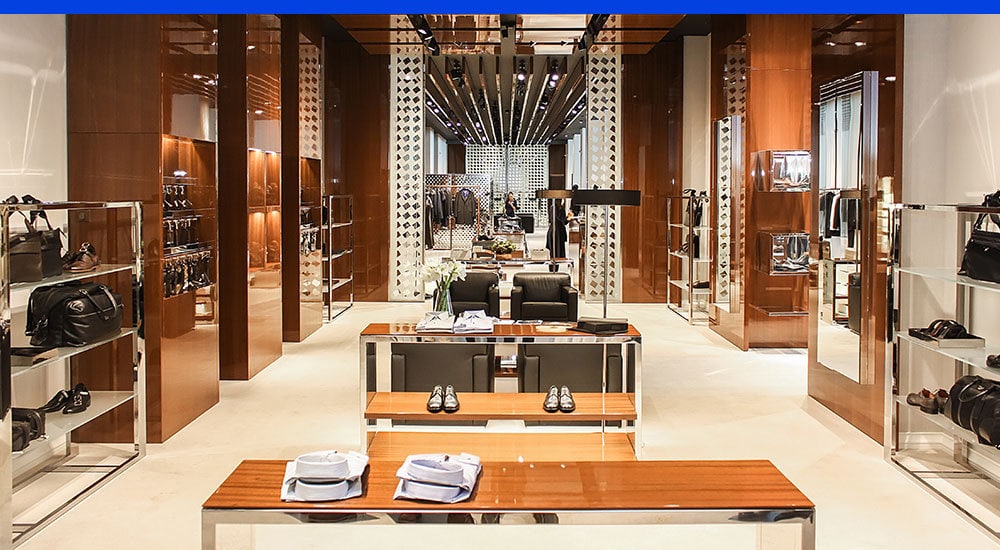Retail & Distribution
6 Starring Roles for Stores in a Next-Gen Retail Universe
17 mei 2019

The men’s store that U.S. retailer Nordstrom opened in New York City in 2018 embodies a lot of this new thinking. The store sells merchandise, yes. But it also blends in other roles. One is service, including shoe shiners, tailors, sneaker-cleaners and personal and in-home stylists. Another role features tech-fueled conveniences, including 24/7 buy online, pick up in store, deliver from store and reserve online/try in store; automated returns kiosks; and kiosks where shoppers can custom-configure apparel.
The new location falls into the first of three distinct roles that Nordstrom has defined for its stores:
- Flagships, which host the company’s iconic events and are designed to excite customers;
- Magnets that serve as shopping destinations; and
- Neighborhood stores driven mostly by convenience and routine purchases, as well as fulfillment centers for returns/BOPIS.
Rather than being increasingly viewed as an undervalued resource and even considered fading, physical stores should instead be regarded as a significant source of competitive advantage. Retailers must leverage information and behaviors from other channels to surprise, delight and drive face-to-face customer loyalty in their brick-and-mortar environments.
according to analyst firm Parker Avery
Stores Wearing Many Hats
Rethinking the store starts with the brand experience and the goals of the business. Then retailers can start redefining ways in which the store can deliver, enable or enhance the value they are seeking to deliver in the marketplace.
Stores today fulfill these six roles:
- Sales, of course! Physical retail still represents about 90% of sales; while digital commerce growth outpaces brick-and-mortar growth, there is still a long way to go. A transformed store may impact those projections by giving consumers more reasons to visit.
- Retailers are transforming their spaces with brand experiences that cannot be delivered digitally. The National Retail Federation found 82% of event-attending shoppers said they were interested in similar events in the future. The biggest draws were exclusive or early access, a product demo/tutorial and pop-up shops. But retailers are getting creative: French department store Galeries Lafayette offers baking classes; Lego holds mini-figure swaps; Mothercare conducts classes on car seats and baby first aid; and Chanel’s first Creative Studio in London offers calligraphy, digital painting and makeup master classes. Research by Reputation.com names The Lego Store, Trader Joe’s and Nordstrom as offering the best-rated customer experience, and noted that chains with high Reputation Scores saw 2.8% same-store sales increases, versus a 1.1% decline at retail chains with low scores.
- Omnichannel Services. Retailers are leveraging stores for channel-crossing services such as BOPIS (buy online/pick up in store), return to store, ship from store, checking store inventory, scheduling appointments with personal shoppers and reserving inventory to try on in-store. Those not only satisfy busy customers but drive more store traffic and often, incremental revenue.
- Fulfillment/logistics. Locating inventory close to customers is key to satisfying ever-shortening delivery windows. Retailers are viewing stores as ready-made fulfillment locations for both click-and-collect and ship/transfer from store. Over-stored chains are transforming some locations into dark stores, which operate exclusively as fulfillment centers, a trend initiated in the UK primarily through grocery and general merchandise retailers such as Tesco.
- Data Gathering. While e-Commerce has always been able to track a site visitor’s every move, retail stores long had little visibility into customer behavior in stores. Now retailers are leveraging video analytics, WiFi, apps, RFID, beacons, GPS and other sensor technology to observe and influence shopper behavior, enabling quick test-and-learn experimentation. According to Forrester, “sensor data lets digital business leaders optimize experiences, merchandizing, marketing and store layout.”
- Education and Community Building. For years, one former men’s apparel retailer’s tagline was, “an educated consumer is our best consumer.” Retailers are embracing that thinking by tapping into shoppers’ appetites to learn more about their hobbies and interests while also fostering loyal followers. Apple stores are fostering future coders with kids-only coding classes. Sephora shoppers can learn about makeup and skincare. Decathlon offers classes in Muay Thai and running.
Recasting The Role Of The Store
Stores have long offered some events and services, of course. The difference today is the role of technology. An omnichannel platform, together with robust marketing capabilities and in-store technologies such as kiosks, mobile devices, wireless networks and sensors, enables retailers to gain deep insights into individual customer needs. Then they can target, promote and deliver on each of these roles on a personal level with individual customers, tailoring the brand experience to what customers want, how and when customers want it.


